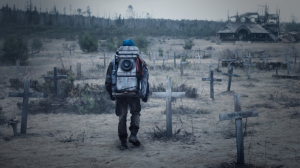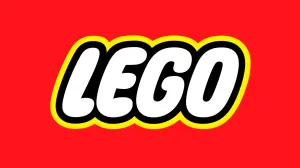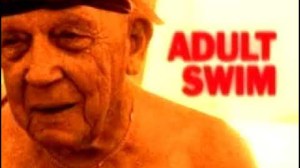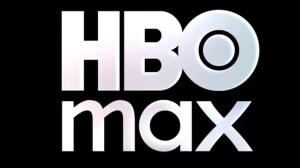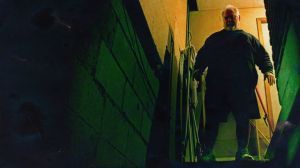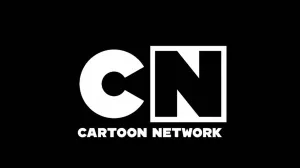It came from the deep.
Videos by ComicBook.com
In 1954, Godzilla surged into Japanese theaters with a destructive force that stunned audiences. Armed with radioactive breath and fearsome claws, the behemoth quickly became known as the undisputed King of Monsters. With nearly 30 films under its belt today, Godzilla still stands as one of the most popular beasts in cinematic history.
The franchise first roared to life after the end of World War II when Japan was suffering from the war’s effects in every way possible. The monstrous idea of Godzilla was birthed following an incident in March 1954 when a US-conducted hydrogen bomb test in the Pacific went awry. The fallout of the nuclear detonation blanketed a commercial Japanese fishing vessel and ultimately sickened all its crew members. The event reminded Japan that the treat of atomic annihilation was still ever-present after Hiroshima and Nagasaki were both bombed, and the reminder ultimately inspired movie producer Tomoyuki Tanaka at Toho to create Godzilla.
Borrowing from films like King Kong and 20,000 Fathoms, Tomoyuki reimagined the consequences of atomic weapons and embodied them in a fire-breathing monster. The beast, who resembles a dinosaur from your most hellish nightmare, was brought to life by practical effects on a very small budget – and it scared Japanese moviegoers half to death.
Over the years, Godzilla has undergone many iterations and cinematic periods that have often done it a disservice. The fearsome monster was relegated to slapstick, awkward comedy in some eras. In others, they turned Godzilla into a mindless Hollywood myth who favored obscene violence to thought-provoking backstories.
If you want to know more about the monster’s length canon, then you are definitely in luck. ComicBook.com has created quick study guide for the history of Godzilla for all your destructive needs.

The Original & The King Of Monsters
The world first met Godzilla in 1954. The creature lumbered from the depths of the Pacific Ocean, threatening Japan and its metropolis cities with god-like powers. Created by Toho, the film became an instant hit in Japan with viewers who had seen the fallout of nuclear warfare firsthand. The film was an eerily silent, black-and-white exploration of how dangerous atomic weapons truly were as warheads were given the power to ‘awake’ slumbering beasts like Godzilla.
For years, Japan looked to Godzilla as a omen of what the world might one day face. The film’s humble origins asked viewers to imagine what nuclear warfare would look like if it were embodied in a nearly indestructable body – and the results weren’t pretty.
50 years later, Godzilla would eventually make his way to America when the original Japanese film was imported by Jewell Entertainment. The studio recut the movie to add in an American news anchor who reported on the monster’s rampage. Much of the film’s negativity towards the U.S. was edited out, and the film even underwent a name change because of a translation error. The iconic name ‘Godzilla’ was accidently created after executives anglicized the film’s original title, ‘Gojira.’
And, so, Godzilla: The King of Monsters was born.

Toho: Showa Era
After the original Godzilla film aired in Japan, Toho was quick to capitalize on its popularity. Films released between 1954-1975 are classified under the studio’s Showa Era. It was during this period of time that Godzilla transformed from a bombastic villain into a campy and often cringe-worthy creature. Just, look at 1962’s King Kong vs Godzilla; You’ll see.
While the first films of the Showa Era depicted Godzilla as a baddie, the franchise eventually transformed him into a hero who reluctantly defended Japan against threats like Mothra, King Ghidorah, and even robotic versions of himself. Ghidorah, the Three-Headed Monster (1964) is a great place to start if you want to see a heroic Godzilla stand up for humanity – well, kind of.

Toho: Heisei Era
After years of campy humor, Toho decided it was time to return Godzilla back to his roots in the 1980s. The studio wanted the King of Monsters to reclaim his place as an explosive nuclear threat, so they rebooted the franchise. Known as the Heisei Era (1984-1995), the next period of Godzilla films brought nail-biting fear back into the franchise.
The era kicked off with Return of Godzilla in 1984. The film featured Godzilla as its lone monster and even used the creature to heighten tensions during the Cold War, naturally upsetting the clash between the U.S. and USSR. This film was also adapted for Western audiences in Godzilla 1985, but it is often a movie fans believe is better left forgotten.
Other films like Godzilla vs. MechaGodzilla and Godzilla vs. Destroyah were also included in this period’s seven-film fun. Rather than introducing new nemeses, Toho opted to revamp its rascally devils with new, sci-fi origins.

TriStar Pictures: Godzilla
By the late 1990s, Godzilla films had slowed to a stop in Japan to the dismay of fans. However, Toho stressed they had good reason to halt production. The studio was giving TriStar Pictures room to promote the first Hollywood adaptation of Godzilla.
In 1998, the American studio finally rolled out their version of Godzilla after years of touch-and-go production. Directed by Roland Emmerich, Godzilla hit theaters following a massive marketing campaign, and it floundered almost immediately. Both fans and critics panned the film while box office earnings only made Godzilla a moderate success at best.
Unsurprisingly, a live-action sequel for the film never saw the light of day. However, an animated series based on the film aired on Fox from 1998-2000.

Toho: Shinsei Era
Following the dismal reception of TriStar’s Godzilla, Toho took back their character with a renewed sense of purpose. The studio wanted to overlook Hollywood and its over-the-top CGI bastardization of Godzilla to make a more faithful adaptation. To do so, they went old-school in the Shinsei Era (1999-2004) and released several standalone features to liven up the Godzilla canon.
The period started in 1999/2000 when the film Godzilla 2000 brought the colossus into the 21st Century. The next film, Giant Monsters All-Out Attack, redefined Godzilla as an evil creature once more before Tokyo SOS pushed him back into a heroic role. Then, Godzilla: Final Wars debuted in 2004 to celebrate the franchise’s 50th anniversary. The film was the last Japanese Godzilla film released until 2016’s Shin Godzilla.

Legendary Pictures: Godzilla
After a prolonged absence, the King of Monsters made a comeback in 2014 when Legendary Pictures released the second Hollywood adaptation of Godzilla. Armed with sophisticated CGI effects and a bank-breaking budget, the film stuck closer to Godzilla’s roots than its predecessor did. The studio realigned the atomic beast with its nuclear origins and pitted him against some terrifying opponents known as MUTOs.
Directed by Gareth Edwards, Godzilla (2014) tore its way back into public consciousness after a quiet respite. The film was hailed as a critical and financial success, prompting Legendary Pictures and Warner Bros. to green-light a sequel. And, in 2020, the two studios plan to take Godzilla a step further and set the goliath against another very famous beast: King Kong. Before the crossover occurs, the studio will release Godzilla 2 in 2019.

Toho: Shin Godzilla
Following the success of Legendary Pictures’ Godzilla, Toho announced plans to reboot the Japanese Godzilla franchise for a third time. The news broke in 2014, and just this year, the acclaimed studio finally released the Shin Godzilla to an awaiting public.
The film was the first to imagine what Godzilla might do to Tokyo in present-day and how the federal government would handle foreign intervention over the deadly monster. Inspired by the Fukushima Daiichi nuclear disaster, Shin Godzilla adopted themes shown in the original Godzilla film by tackling topics such as energy depletion and nuclear warfare. And, most importantly, the brutish beast was given a majorly terrifying makeover.
Unsurprisingly, Shin Godzilla became a massive box office hit and now stands as the highest-grossing Japanese film in the franchise. Toho has yet to confirm rumors about a sequel, but it is only a matter of time until the studio resurrects Godzilla yet again.
After all, they don’t call him the King of Monsters for nothing.


